The historical Tang-e Chogan is located near the ancient city of Bishapur and is 23 km from the city of Kazerun. The Shapur River flows northeast to southwest through the gorge (Tang-e). Around the gorge, there are several magnificent reliefs of the great Sasanian kings.
Tang-e Chogan was the site of the traditional Sasanian kings polo game. This gorge has 6 reliefs related to Shapur I and Bahram I and II. There is also a large statue of Shapur I, which is 6 meters high, located in the Shapur Cave, at a height of about 700 meters from the river bed.
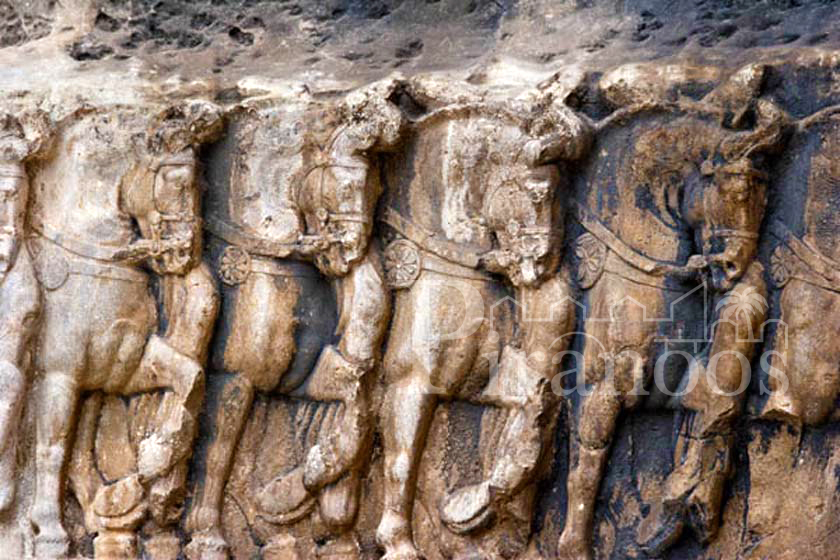
Tang-e Chogan has larger and more crowded reliefs than any other Sassanid era reliefs, with three of them being more than 30 square meters in size and a body of more than 30 persons in each relief. So the reliefs of this gorge are unique in Iran and only the ancient relief of Khosrow Parviz’s hunting scene in Taq-e Bostan in Kermanshah is comparable to them.
There are 6 carved reliefs in Tang-e Chogan; almost all of them are located near the entrance and less than 500 meters from Bishopur town.
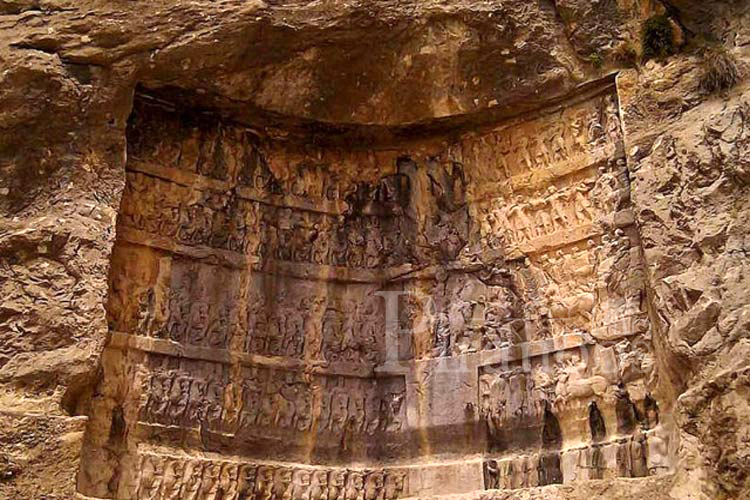
The first relief, which is larger and more crowded than any other relief, is a scene in celebrating Shapur I’s victory over the Roman Empire. Shapur I can be seen in the center of the relief riding on a horse and Gordianus’s corpse is under the feet of Shapur’s horse, and Valerian’s hands are held captive in Shapur’s hand and Philip kneels in front of Shapoor’s horse and demands peace. The Persian military and officers are also behind Shapur in five rows of horses and the Roman officers and noblemen are seen in 5 rows carrying gifts and offerings in front of King Shapur I.
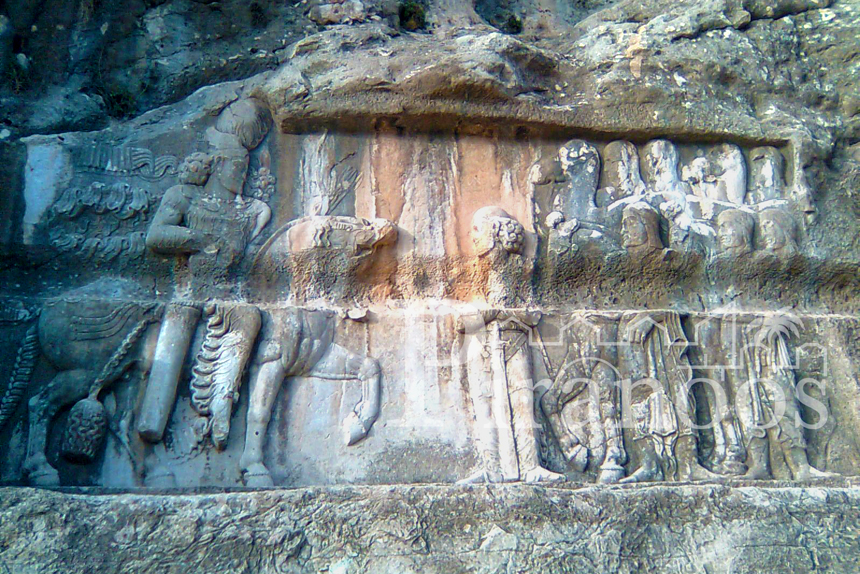
The second relief represents the victory of King Bahram II over the Arabs, on the left is Bahram on horseback, and the Arabs are leaded by Iranian commanders to offer the king horses and camels.
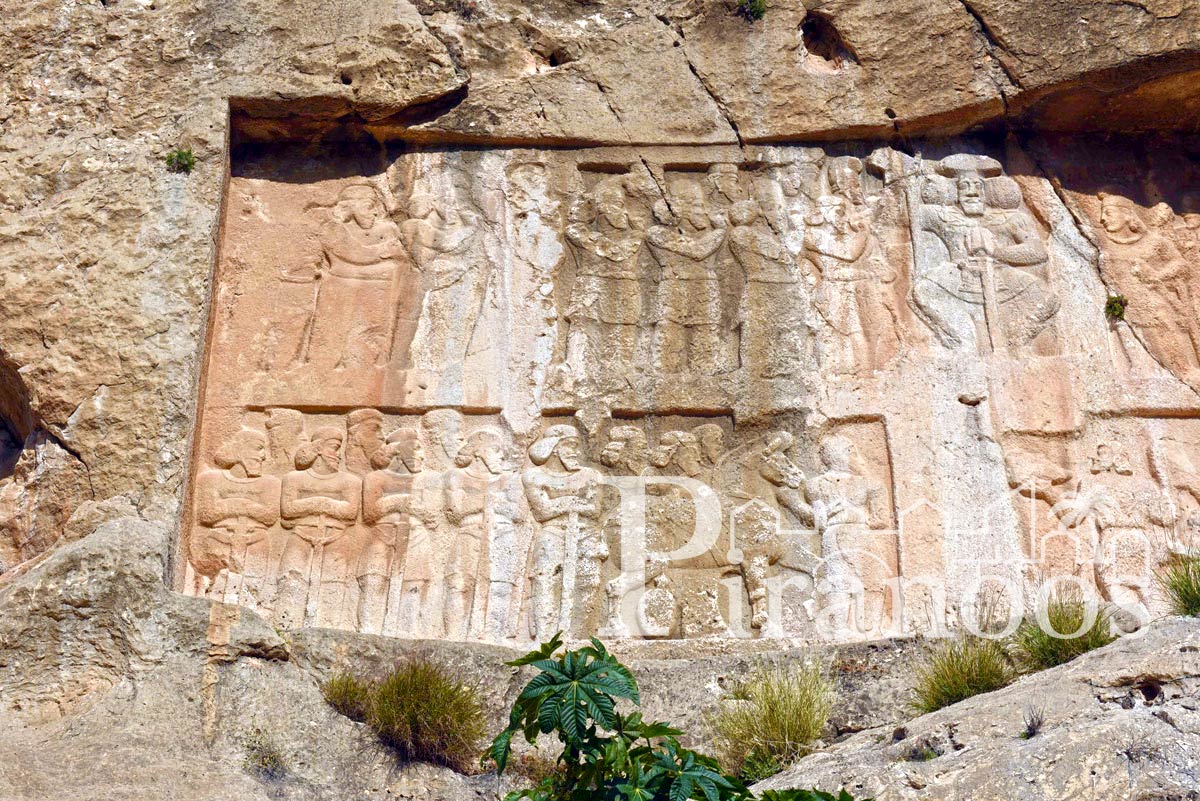
The third relief is the most beautiful and perfect relief of the Sassanid era, which shows the ceremony of the Bahram I receiving the royal ring from Ahura Mazda. The engraving of this amazing relief is very artistic and even the wrinkles and the details of the clothes and so on are all beautifully illustrated. Everything in this relief fits in amazingly well. Even the physical details of the horse and the veins on the horse’s legs have been shown.
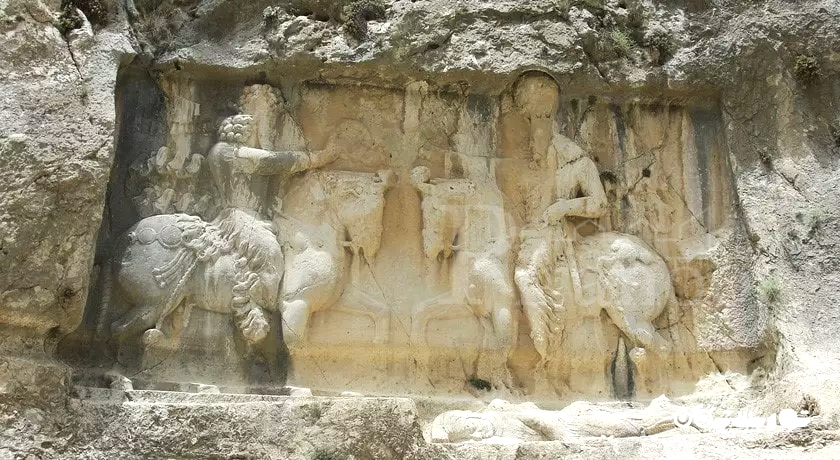
The fourth relief depicts the scene of the victory of Bahram II over the rebels, in which the king sits on the throne in the center while on his right side stand the Iranian commanders and soldiers with respect and the rebels and captivates on the left. They are brought by the Iranian soldiers to the presence of the king.
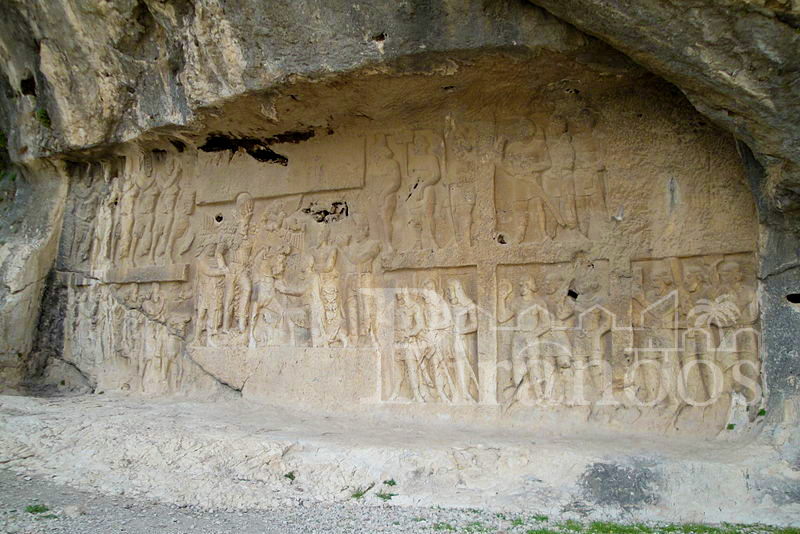
The fifth relief located on the right side of the gorge, is the most intact and complete relief among the others. It is about Shapur’s victory over the Roman Empire.
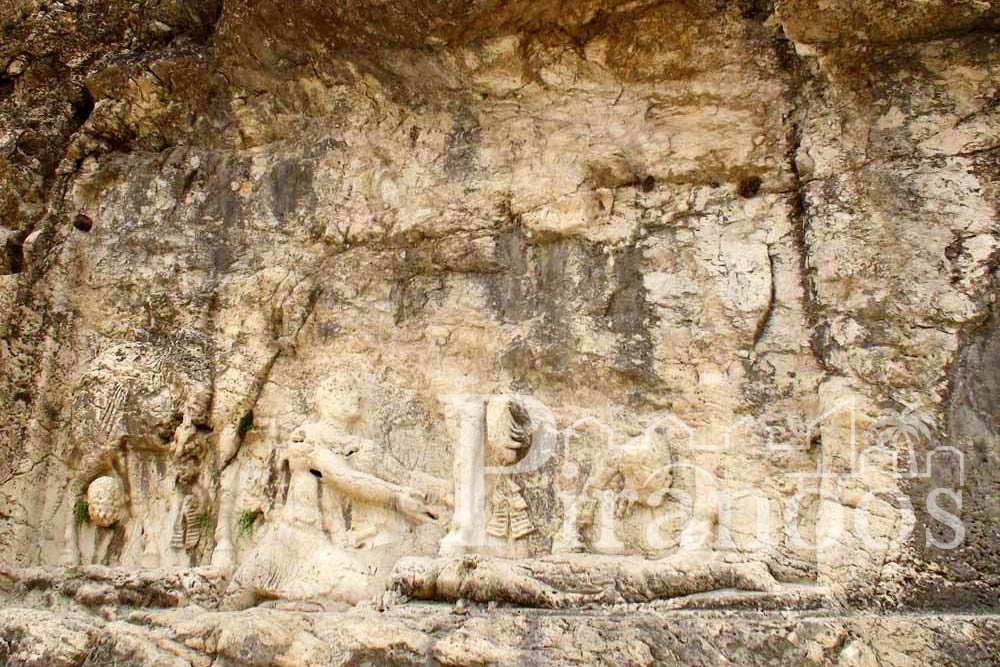
The sixth relief, located at the right side of the gorge and exactly next to the road, has suffered the most damage during time and its upper parts have almost been destroyed. This relief depicts the ceremony of Shapur I receiving the Fareh- Izadi (the royal ring) from Ahura Mazda, as well as his victory in the war against the Romans. In this relief, both King and Ahura Mazda (the creator and highest deity of Zoroastrianism) are shown riding on horses and facing each other. The Shah is taking the King’s diadem from Ahura Mazda. Under Ahura Mazda’s horse feet, the Ahriman (the devil) is lying and beneath Shapur’s horse’s feet is the corpse of Gordianus.
The Tang-e Chogan’s reliefs were nationally registered in January.